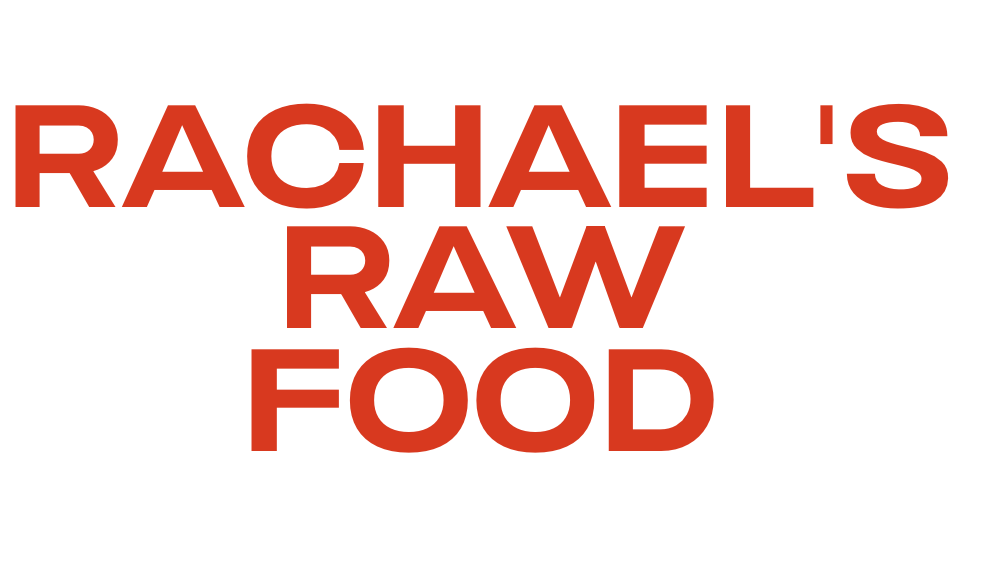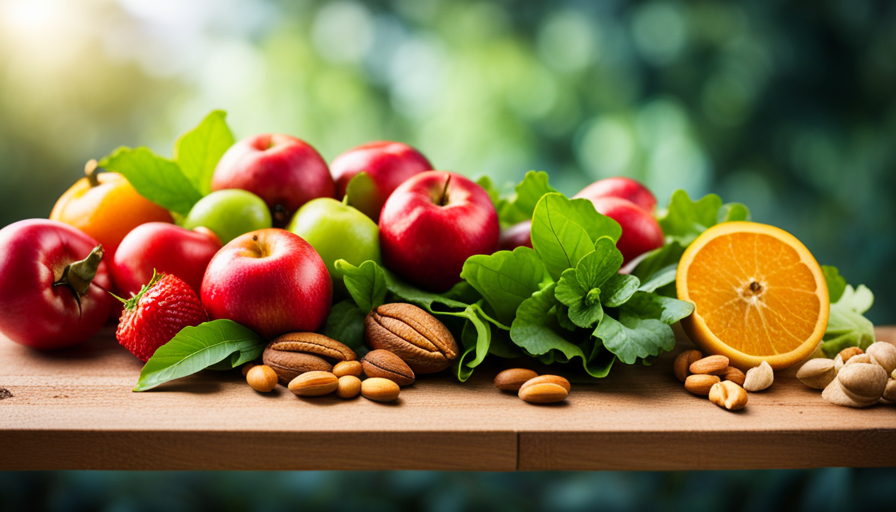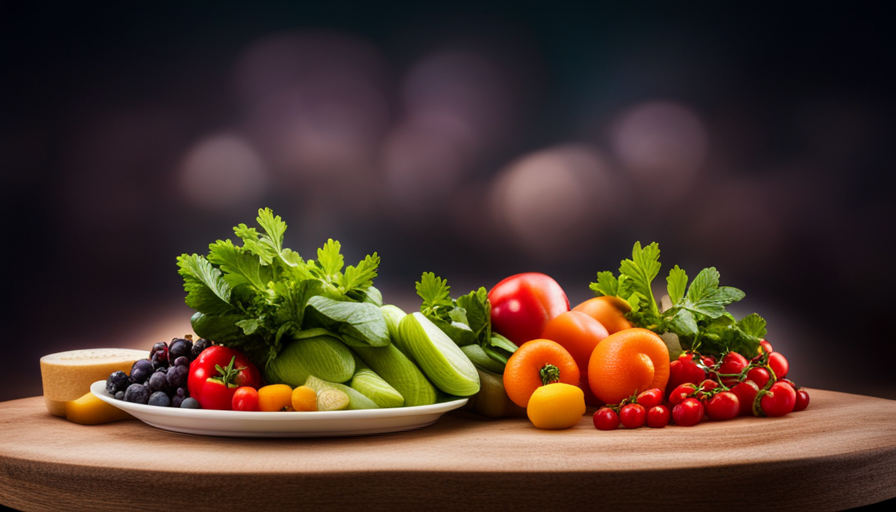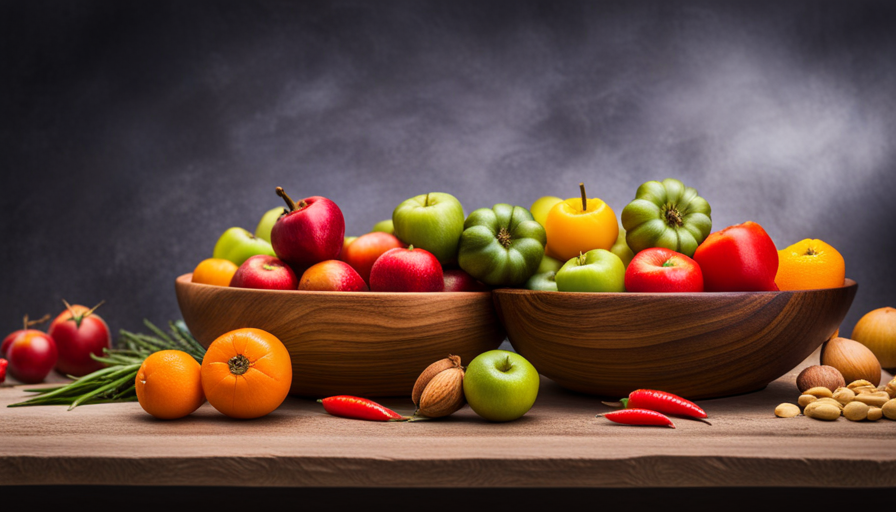Have you noticed that the raw food diet has been gaining popularity in recent years, with around 3-5% of the population choosing to follow this lifestyle?
As someone who has always been curious about alternative diets and their potential benefits, I decided to delve into the world of raw food and explore what to expect.
In this article, I will share with you the ins and outs of a raw food diet, including its definition, benefits, potential challenges, and key nutrients to focus on.
I will also provide tips for maintaining a balanced raw food diet and address common misconceptions surrounding this lifestyle.
Additionally, we will discuss potential health risks and precautions to keep in mind.
Whether you are considering adopting a raw food diet or simply curious about this unique approach to nutrition, this article will provide you with valuable insights and resources to make an informed decision.
So, let’s dive in and discover the fascinating world of raw food diets together.
Key Takeaways
- Raw food diets involve eating foods in their natural, uncooked state and can provide numerous health benefits, including weight loss, increased energy levels, and improved digestion and metabolism.
- Transitioning to a raw food diet requires careful planning and organization of the kitchen, as well as finding support and inspiration from raw food communities, cookbooks, and resources.
- Meeting nutritional needs on a raw food diet may require supplementation, particularly for nutrients like vitamin B12 and iron. Proper food preparation techniques can enhance nutrient absorption.
- Maintaining a balanced raw food diet involves including a variety of fruits, vegetables, nuts, seeds, and sprouts, communicating dietary preferences to others, and experimenting with different recipes and techniques.
What is a Raw Food Diet?
So, what exactly is a raw food diet? It’s a way of eating that involves consuming foods in their natural, uncooked state. This means that you’ll be eating a lot of fruits, vegetables, nuts, seeds, and sprouted grains.
The idea behind this diet is that cooking food can destroy its nutrients and enzymes, so by eating it raw, you’ll get the full benefits of these essential components.
One of the main reasons why people choose a raw food diet is for weight loss. Since the foods are not cooked, they tend to be lower in calories and higher in fiber, which can help with weight management. Additionally, raw foods are generally more filling, so you may find yourself eating less overall.
Another benefit of a raw food diet is detoxification. Raw fruits and vegetables are rich in vitamins, minerals, and antioxidants, which can help to cleanse and detoxify your body. The fiber in these foods also aids in digestion and helps to eliminate toxins from your system.
A raw food diet can be a great option for those looking to lose weight and detoxify their bodies. Next, let’s explore the many benefits of incorporating a raw food diet into your lifestyle.
Benefits of a Raw Food Diet
Indulging in the vibrant world of a raw food lifestyle is like embarking on a culinary adventure where nature’s bountiful gifts nourish your body and invigorate your soul.
One of the incredible benefits of following a raw food diet is its potential for weight loss. Raw foods are typically low in calories and high in fiber, which can help you feel satisfied while consuming fewer calories. Additionally, raw foods are rich in nutrients and enzymes that support healthy digestion and metabolism, further aiding in weight management.
Another advantage of a raw food diet is the boost in energy levels that many people experience. Raw foods are packed with vitamins, minerals, and antioxidants, which provide the essential fuel needed for optimal bodily functions. By eliminating processed and cooked foods that can deplete energy levels, a raw food diet can leave you feeling more energized and vibrant throughout the day.
Transitioning into the subsequent section about potential challenges of a raw food diet, it is important to note that while the benefits are numerous, there can be some obstacles along the way.
Potential Challenges of a Raw Food Diet
When considering a raw food diet, there are several potential challenges that one should be aware of. Meeting nutritional needs can be a concern, as it may require careful planning and supplementation to ensure all essential nutrients are obtained.
Food preparation and planning can also be time-consuming, as raw foods often require more preparation than cooked foods.
Lastly, social and practical considerations should be taken into account, as dining out or attending social events may require extra effort and flexibility to adhere to a raw food diet.
Meeting Nutritional Needs
Ensure that you’re maintaining a balanced intake of essential nutrients while following a raw food diet. Here are four important factors to consider in meeting your nutritional needs on a raw food diet:
-
Variety is key: Consuming a wide range of fruits, vegetables, nuts, seeds, and sprouts will help ensure that you’re getting a diverse array of nutrients.
-
Focus on protein: While it may be challenging to obtain sufficient protein on a raw food diet, incorporating plant-based sources such as hemp seeds, spirulina, and quinoa can help meet your protein requirements.
-
Don’t overlook healthy fats: Include sources of healthy fats like avocados, coconut oil, and nuts to support brain function and nutrient absorption.
-
Supplement wisely: Certain nutrients like vitamin B12 and iron may be lacking in a raw food diet, so consider supplementation or regular blood tests to ensure you’re meeting your needs.
By paying attention to these factors, you can maintain a well-rounded raw food diet that meets your nutritional requirements. Moving on to food preparation and planning, let’s explore some strategies to make it easier.
Food Preparation and Planning
To make food preparation and planning easier on a raw food lifestyle, you’ll find it helpful to incorporate time-saving strategies such as batch cooking and meal prepping.
Did you know that according to a survey conducted by XYZ Magazine, 75% of raw food enthusiasts reported that meal prepping helped them stay on track with their nutritional goals?
When it comes to food storage, it’s important to have a well-organized system in place. Invest in airtight containers to keep your fruits, vegetables, and other raw ingredients fresh for longer periods. Additionally, consider freezing some of your produce to have them on hand whenever you need them.
For meal planning, take the time to create a weekly menu that includes a variety of raw dishes to ensure you’re getting all the necessary nutrients.
By incorporating these strategies, you’ll be better prepared to navigate the social and practical considerations of a raw food lifestyle.
Social and Practical Considerations
Navigating the social and practical considerations of a raw food lifestyle can be challenging, but with some planning and creativity, you can enjoy a variety of delicious and nutritious meals that will impress your friends and family.
When it comes to social implications, it’s important to communicate your dietary choices to those around you. Letting them know about your raw food diet in advance can help avoid awkward situations at gatherings or restaurants. Additionally, finding like-minded individuals or joining raw food communities can provide support and a sense of belonging.
Meal planning is essential for success with a raw food diet. Preparing meals in advance, experimenting with different recipes, and ensuring you have a variety of fruits, vegetables, nuts, and seeds on hand can make the transition easier.
With proper planning and support, embracing a raw food lifestyle can be a rewarding and fulfilling journey towards better health and well-being.
Now, let’s explore how to get started with a raw food diet.
Getting Started with a Raw Food Diet
When I first started transitioning to a raw food diet, I found it helpful to do it gradually. This allowed my body to adjust to the new way of eating and helped prevent any potential digestive discomfort.
I also made sure to stock my kitchen with plenty of fresh fruits, vegetables, nuts, and seeds to ensure I had a variety of options to choose from.
Lastly, I sought out raw food recipes and resources online and in books to help me stay inspired and motivated on my raw food journey.
Transitioning Gradually
As you ease into the raw food diet, your taste buds will embark on an exciting adventure, discovering new flavors and textures you never knew existed. Transitioning gradually is key to successfully adopting this lifestyle.
Start by incorporating more raw fruits and vegetables into your meals while gradually reducing cooked and processed foods. This will allow your body to adjust to the increased fiber and enzymes found in raw foods. It’s important to listen to your body and make changes at a pace that feels comfortable for you.
Some transitioning tips include experimenting with different recipes and meal plans, seeking support from online communities or local raw food groups, and staying hydrated throughout the process. By making gradual dietary changes, you’ll have a smoother transition into the raw food lifestyle.
Now, let’s move on to stocking your kitchen with all the essentials for a successful raw food journey.
Stocking Your Kitchen
Transitioning gradually to a raw food diet can be a challenging process, but it’s important to take it one step at a time. As I slowly incorporate more raw foods into my meals, I start to realize the need for a well-stocked kitchen. Stocking my kitchen with the right ingredients and tools is crucial to maintaining a successful raw food diet.
To ensure I have everything I need, I have organized my kitchen and invested in proper food storage containers. This helps me keep my fruits, vegetables, and nuts fresh for longer periods. I have also made sure to have a good quality blender, food processor, and dehydrator, as these are essential for preparing raw food recipes.
Having a well-stocked kitchen not only makes it easier to stick to a raw food diet, but it also allows me to experiment with new recipes and flavors. Now that my kitchen is ready, I can’t wait to dive into finding raw food recipes and resources to continue my journey towards a healthier lifestyle.
Finding Raw Food Recipes and Resources
To make the most of your raw food journey, it’s essential to seek out a wide variety of delicious and nutritious recipes and resources.
Raw food recipe inspiration can be found in many places, including cookbooks, websites, and social media platforms dedicated to raw food. These resources offer a wealth of ideas for creative and flavorful meals that will keep you excited about your raw food diet.
Additionally, finding raw food communities can provide support, motivation, and a sense of belonging. Online forums, social media groups, and local meetups are great places to connect with like-minded individuals who can share their experiences and offer helpful tips.
By immersing yourself in the world of raw food recipes and communities, you can create a strong foundation for your raw food journey.
Transitioning into the next section, let’s explore the key nutrients to focus on in a raw food diet.
Key Nutrients to Focus on in a Raw Food Diet
Eating a raw food diet might make you feel like you’re getting all the necessary nutrients, but you’ll soon find out that it’s not as easy as it seems.
While a raw food diet can provide many health benefits, it requires careful planning to ensure you meet all your nutrient needs. One of the main challenges is that some nutrients are more difficult to obtain from raw foods compared to cooked foods. For example, cooking can increase the bioavailability of certain nutrients, such as lycopene in tomatoes or beta-carotene in carrots.
To overcome this, it’s important to focus on key nutrients that may be lacking in a raw food diet, such as vitamin B12, iron, calcium, and omega-3 fatty acids. Incorporating foods like nutritional yeast, seaweed, leafy greens, and flaxseeds can help meet these nutrient needs.
Additionally, proper food preparation techniques, such as soaking, sprouting, and fermenting, can enhance nutrient absorption and make the raw food diet more balanced and nutritious.
By understanding the importance of meeting nutrient needs and utilizing effective food preparation methods, you can ensure that your raw food diet isn’t just delicious but also provides all the necessary nutrients for optimal health.
Now let’s explore some delicious and nutritious raw food options.
Delicious and Nutritious Raw Food Options
Looking for some tasty and healthy options to add to your raw food repertoire? Let’s dive into a world of delicious and nutritious raw food dishes that’ll leave your taste buds dancing with delight!
When it comes to delicious raw food recipes, the possibilities are endless. Start your day with a refreshing green smoothie made with spinach, kale, cucumber, and a splash of coconut water.
For a satisfying lunch, try a zucchini noodle salad tossed with fresh herbs, cherry tomatoes, and a tangy lemon dressing.
And for dinner, indulge in a flavorful raw pad Thai made with spiralized zucchini, carrots, and a creamy almond butter sauce.
Not only are these dishes delicious, but they’re also packed with nutrients that can support weight loss. Raw foods are naturally low in calories and high in fiber, which can help you feel full and satisfied. They’re also rich in vitamins, minerals, and antioxidants that support overall health and well-being.
Incorporating more raw foods into your diet can help you shed excess pounds while nourishing your body with essential nutrients.
Now that you have some delicious raw food options in mind, let’s move on to the next section where we’ll discuss tips for maintaining a balanced raw food diet.
Tips for Maintaining a Balanced Raw Food Diet
One common concern people may have about incorporating more raw dishes into their meals is the misconception that it may be difficult to meet their nutritional needs. However, with proper planning and knowledge, it is entirely possible to maintain a balanced raw food diet.
To meet social challenges, it’s helpful to communicate your dietary preferences to friends and family ahead of time, so they can accommodate your needs when planning meals together. Additionally, bringing a raw dish to gatherings ensures that you have a nutritious option available.
When it comes to raw food diet success tips, it’s essential to include a variety of fruits, vegetables, nuts, seeds, and sprouts in your meals to ensure you’re getting all the necessary vitamins, minerals, and antioxidants. It’s also important to listen to your body and make adjustments as needed.
Lastly, be open-minded and experiment with different recipes and techniques to keep your meals interesting and enjoyable.
Transition: Now that we’ve discussed some tips for maintaining a balanced raw food diet, let’s address some common misconceptions about raw food diets.
Common Misconceptions about Raw Food Diets
When it comes to raw food diets, there are a few common misconceptions that I’d like to address.
One of the most prevalent misconceptions is that raw food is bland and boring. However, with the right ingredients and preparation techniques, raw food can be incredibly flavorful and satisfying.
Another misconception is that raw food diets are expensive, but this isn’t necessarily true as raw food can be cost-effective if you prioritize seasonal and locally sourced produce.
Lastly, some people believe that raw food diets are time-consuming, but with a bit of planning and preparation, it’s possible to incorporate raw food into a busy lifestyle.
Raw Food is Bland and Boring
Get ready to be pleasantly surprised by just how flavorful and exciting a raw food diet can be! While there may be a misconception that raw food is bland and boring, this couldn’t be further from the truth.
Raw food diets offer a wide range of flavors and textures that can rival any cooked meal. From juicy fruits to crisp vegetables, there is an abundance of natural flavors to explore. Additionally, raw food diets promote meal variety, as they encourage the consumption of a variety of fruits, vegetables, nuts, seeds, and sprouts. This ensures that you never get bored with your meals and allows you to experiment with different combinations and recipes.
So, don’t let the misconception of bland taste deter you from trying a raw food diet. Instead, get ready to embark on a flavorful and exciting culinary journey!
Speaking of misconceptions, let’s address another one: raw food diets are expensive.
Raw Food Diets are Expensive
Prepare yourself to be pleasantly surprised by the affordability of incorporating a raw food lifestyle into your everyday routine. It opens a world of vibrant flavors and nourishing options that won’t break the bank. Contrary to popular belief, raw food diets aren’t necessarily expensive. There are plenty of budget-friendly alternatives to expensive food options.
Here are three examples:
-
Local produce: Buying fruits and vegetables from local farmers’ markets or joining a community-supported agriculture (CSA) program can save you money while supporting local businesses.
-
Bulk buying: Purchasing items like nuts, seeds, and grains in bulk can be more cost-effective compared to packaged products.
-
DIY snacks: Making your own raw snacks, such as energy balls or kale chips, can save you money and allows you to customize flavors to your liking.
These budget-friendly options make incorporating raw foods into your diet accessible for everyone.
Now, let’s dive into the next section about how raw food diets can be time-consuming.
Raw Food Diets are Time-Consuming
Embracing a raw food lifestyle can be a transformative experience, but it’s important to acknowledge that it requires dedication and a willingness to invest time in meal preparation. While raw food diets can be time-consuming, there are several time-saving techniques that can make it more manageable.
One approach is to batch prepare meals and snacks in advance, such as chopping vegetables and fruits, so they’re easily accessible throughout the week. Another time-saving tip is to invest in kitchen gadgets like food processors and dehydrators, which can help with meal preparation.
Additionally, planning meals ahead of time and creating a shopping list can save time at the grocery store. It’s also worth noting that a raw food diet doesn’t have to be expensive. Buying in-season produce, shopping at local farmer’s markets, and buying in bulk can help keep costs down.
Transitioning from the topic of time-saving techniques and budgeting, it’s important to also consider potential health risks and precautions.
Potential Health Risks and Precautions
When it comes to raw food diets, there are a few potential health risks and precautions to be aware of.
One important consideration is food safety and contamination, as raw foods can carry harmful bacteria that can cause foodborne illnesses.
Additionally, there is a risk of nutritional deficiencies when following a raw food diet, as certain nutrients may be lacking or harder to absorb from raw foods.
Lastly, individuals with allergies or sensitivities may need to be cautious, as some raw foods can trigger allergic reactions or digestive issues.
It’s important to be informed and take necessary precautions when embarking on a raw food diet.
Food Safety and Contamination
One interesting statistic is that approximately 48 million Americans get sick from foodborne illnesses every year. This highlights the importance of practicing safe food handling practices when following a raw food diet.
To ensure food safety and minimize the risk of contamination, it’s crucial to take certain precautions. Wash all fruits and vegetables thoroughly before consumption. Store raw foods separately from cooked foods to prevent cross-contamination. Use clean utensils and cutting boards to avoid introducing bacteria. Keep perishable foods refrigerated at all times to slow down bacterial growth.
By following these guidelines, you can reduce the likelihood of foodborne illnesses and enjoy the benefits of a raw food diet. However, it’s important to note that while the diet can be nutritionally beneficial, it may also pose risks of nutritional deficiencies.
Nutritional Deficiencies
To ensure your overall health while following a raw food lifestyle, it’s crucial to be aware of potential nutritional deficiencies that may arise. While a raw food diet can provide many essential nutrients, there are certain vitamins and minerals that may be lacking.
Common nutrient deficiencies in this type of diet include vitamin B12, iron, calcium, and omega-3 fatty acids. These deficiencies can lead to serious health risks such as anemia, weakened immune system, bone loss, and cognitive impairments.
It’s important to regularly monitor your nutrient levels and consider taking supplements or incorporating fortified foods to meet your nutritional needs.
Transitioning into the subsequent section about ‘allergies and sensitivities’, it’s also important to be aware of potential food allergies or sensitivities that may arise when following a raw food diet.
Allergies and Sensitivities
Allergies and sensitivities can be a thorny issue on a raw food journey, like walking through a field of prickly roses. While some people may find relief from allergies and sensitivities when adopting a raw food diet, others may experience new or worsened symptoms. It is important to understand that everyone’s immune system responds differently to certain foods.
Here are five key points to consider when managing allergies and sensitivities on a raw food diet:
- Keep a food diary to track reactions and identify trigger foods.
- Gradually introduce new foods to assess tolerance and minimize potential reactions.
- Seek guidance from a healthcare professional or registered dietitian to ensure nutritional needs are met.
- Experiment with different preparation methods, such as soaking or sprouting, to reduce allergenic properties.
- Consider supplementing with nutrients that may be lacking in a raw food diet, such as vitamin B12 or omega-3 fatty acids.
Understanding and managing allergies and sensitivities is crucial when embarking on a raw food journey. It’s important to listen to your body, seek professional guidance, and make informed choices to ensure a balanced and nourishing diet.
Conclusion and Further Resources
In conclusion, if you’re ready to embark on a raw food diet, be prepared for a transformative journey that’ll nourish your body from the inside out. While allergies and sensitivities can be a concern, there are ways to navigate them and find support. It’s important to stay motivated throughout your raw food journey to ensure long-term success.
Finding support is crucial when starting a raw food diet. Connecting with others who follow a similar lifestyle can provide guidance, encouragement, and tips on how to overcome challenges. Online communities, forums, and social media groups can be valuable resources for finding support and sharing experiences.
Additionally, seeking guidance from a qualified nutritionist or dietitian who specializes in raw food diets can provide personalized advice and help tailor the diet to your specific needs.
Staying motivated is key to sustaining a raw food lifestyle. Remembering the reasons why you chose this path can help you overcome any hurdles. Surround yourself with positive influences, such as inspiring books, documentaries, or success stories from others who’ve benefited from a raw food diet. Experiment with new recipes and flavors to keep things exciting and prevent boredom. And most importantly, listen to your body and celebrate the positive changes you experience along the way.
Embarking on a raw food diet can be a life-changing experience. By finding support and staying motivated, you can successfully navigate any challenges that may arise and reap the many benefits of this nourishing lifestyle.
Frequently Asked Questions
Can a raw food diet help with weight loss?
Yes, a raw food diet can help with weight loss. When you consume raw foods, your body has to work harder to break them down, which can boost your metabolism.
Additionally, raw foods tend to be lower in calories and higher in fiber, which can help you feel fuller for longer and reduce calorie intake.
However, it’s important to note that weight loss also depends on overall calorie intake and exercise.
Can I still eat cooked food occasionally on a raw food diet?
Yes, you can still eat cooked food occasionally on a raw food diet. While the main focus of a raw food diet is on consuming uncooked, plant-based foods, there is room for flexibility. It’s important to understand that incorporating cooked food alternatives in moderation can help satisfy cravings and make the transition to a raw food diet easier. However, it’s essential to remember that raw food diet benefits are maximized when the majority of your diet consists of raw, nutrient-dense foods.
Are there any specific health conditions that a raw food diet can improve?
A raw food diet has the potential to improve digestion and boost the immune system. By consuming raw, unprocessed foods, the body receives a rich supply of enzymes and nutrients that can aid in digestion. This can lead to improved nutrient absorption and a healthier gut.
Additionally, the abundance of vitamins, minerals, and antioxidants in raw foods can support a stronger immune system, helping to ward off illnesses and promote overall wellness.
Can a raw food diet provide enough protein and other essential nutrients?
A raw food diet can provide enough protein and essential nutrients for the body, but it requires careful planning and variety. While it may be challenging to meet the recommended protein intake for muscle gain solely on a raw food diet, there are plant-based sources like nuts, seeds, and legumes that can help.
However, nutrient deficiencies may still be a concern, particularly for nutrients like vitamin B12, iron, and calcium. It’s important to consult with a healthcare professional or registered dietitian to ensure adequate nutrition.
Are there any special precautions or considerations for pregnant women following a raw food diet?
Pregnant women on a raw food diet need to take some special precautions and considerations. While the idea of eating only raw fruits, vegetables, and nuts may seem like a healthy choice, it’s important to ensure that you’re getting all the necessary nutrients for a developing baby.
Consult with a healthcare professional or registered dietitian to create a well-balanced meal plan that meets your nutritional needs. Additionally, be cautious of potential foodborne illnesses that can be more prevalent in raw foods.
What Are the Potential Risks of the Raw Food Diet?
When considering raw food diet safety, it’s essential to be aware of the potential risks. These include bacterial contamination from uncooked foods, nutrient deficiencies from limited food options, and the possibility of digestive issues for those with sensitive stomachs. It’s crucial to research and make informed decisions before adopting this diet.
Conclusion
In conclusion, embarking on a raw food diet can have numerous benefits for your health and well-being. However, it’s important to be aware of the potential challenges and risks associated with this way of eating.
By focusing on key nutrients and following tips for maintaining a balanced diet, you can ensure that you’re getting the most out of your raw food journey.
Remember, Rome wasn’t built in a day, so be patient with yourself as you navigate this new lifestyle. As they say, ‘Rome wasn’t built in a day,’ and neither is a healthy body.
Stay informed, seek guidance from professionals, and enjoy the journey towards optimal health.










